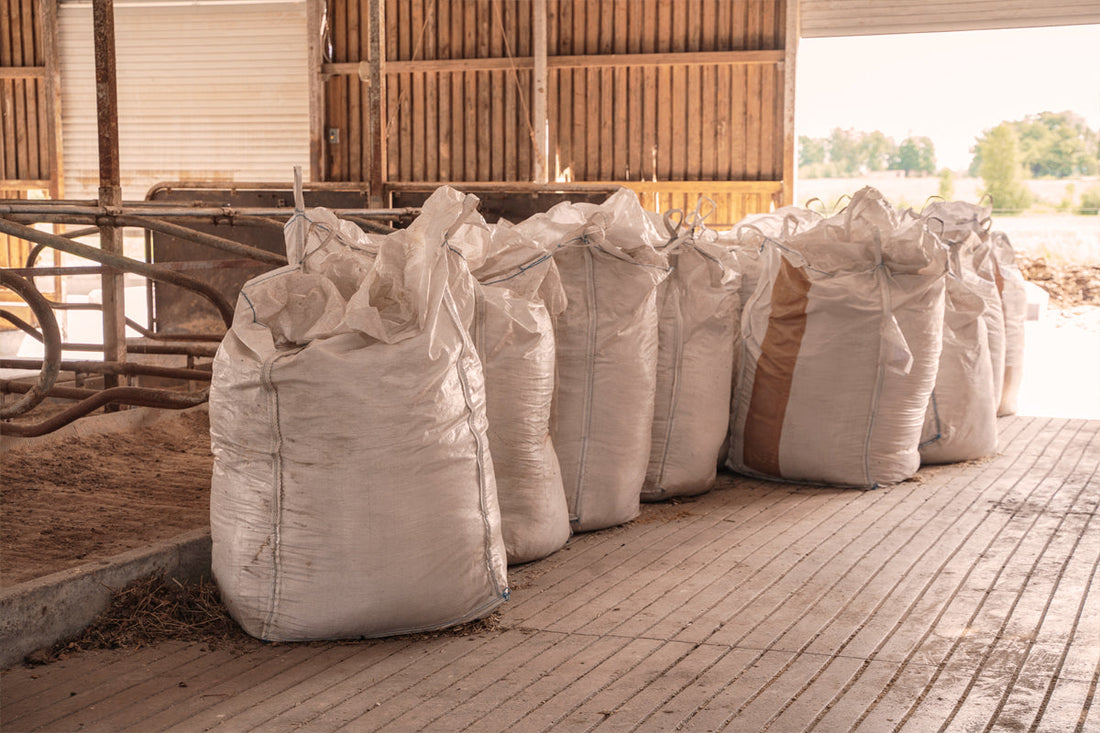
DIY Feed Storage Solutions for Your Farm
Share
Proper storage of livestock feed is crucial for maintaining the quality and nutritional value of your animals' diet. Whether you use pellets or traditional hay, good storage solutions can prevent spoilage, reduce waste, and save money. In this guide, we'll explore some DIY feed storage options and best practices for keeping your feed fresh, focusing on the differences between pellets and hay and why each might work for you.
Why Proper Feed Storage Matters
Storing feed correctly helps prevent contamination from moisture, pests, and mold, all of which can compromise the feed's quality and pose health risks to your livestock. Implementing effective storage methods can also help maintain the nutritional value of feed, ensuring your animals receive the best possible diet.
DIY Feed Storage Solutions
Bins and barrels are excellent for storing feed pellets. These containers are often made from plastic or metal and can be easily sealed to protect against moisture and pests. Place them on pallets or platforms to keep them off the ground and avoid contact with water. Medalist pellets need a little more care since they do not contain any preservatives, they need to stay dry but also need to breathe to keep them from molding.
- Hay Bale Covers: For hay, consider using breathable hay bale covers or tarps. These covers protect hay from the elements while allowing airflow, reducing the risk of mold growth. Ensure that hay is stored on wooden pallets or gravel to prevent ground moisture from seeping in.
- Feed Sheds: Building a small feed shed is a practical DIY solution for both pellets and hay. These sheds can be equipped with shelving and storage bins, making it easy to organize different feed types. Ensure the shed is well-ventilated and positioned on high ground to avoid flooding.
- PVC Feed Dispensers: Create simple, gravity-fed dispensers using PVC pipes for easy access to pellets. These dispensers can be mounted on walls inside a shed or barn, keeping feed off the ground and organized.
- Old Freezers: Repurpose old chest freezers as storage bins. Freezers are rodent-proof, weather-resistant, and offer an airtight seal, making them ideal for storing bulk feed pellets.
Best Practices for Storing Feed Pellets and Hay
- Protect from Rodents: Mice and rats are notorious for finding their way into feed storage. Use rodent-proof containers, and regularly inspect your storage areas for signs of infestation.
- Rotate Stock: Practice the “first in, first out” rule—use older feed before new feed to ensure nothing goes stale or loses its nutritional value.
- Temperature Control: Avoid storing feed in areas exposed to extreme temperatures. Heat can degrade the nutritional quality of feed pellets, while freezing can damage their structure

Pellets vs. Hay: Which is Easier to Store?
Pellets
- Pro: Feed pellets are compact and dense, making them easier to store in smaller spaces. They come in bags that can be stacked efficiently and are less prone to mold and pests when stored properly.
- Con: Pellets can be susceptible to moisture, which can cause them to disintegrate or spoil. Airtight, moisture-proof containers are essential for keeping them in good condition.
Hay
- Pro: Hay is a natural, unprocessed option that many livestock owners prefer for its simplicity and familiarity. It can be stored in larger, more open spaces and doesn't require specialized containers.
- Con: Hay takes up more space, is prone to mold if it gets wet, and can attract rodents if not stored correctly. Proper ventilation and elevation from the ground are key to maintaining its quality. Conclusion
Both feed pellets and hay have their unique storage needs, but with the right DIY solutions and best practices, you can ensure your livestock feed stays fresh and nutritious. Whether you opt for the compact convenience of pellets or the traditional approach of hay, investing in proper storage will pay off in the health and productivity of your animals.
Conclusion
Proper feed storage is essential for maintaining the quality and nutritional value of both pellets and hay. DIY solutions like weatherproof bins, hay bale covers, and feed sheds can protect feed from moisture, pests, and contamination. While pellets are easier to store due to their compact size and resistance to pests, hay remains a viable option for those who prefer a more traditional feed approach. By implementing the right storage practices, you can ensure your livestock has access to fresh, safe, and nutritious feed all year round.
